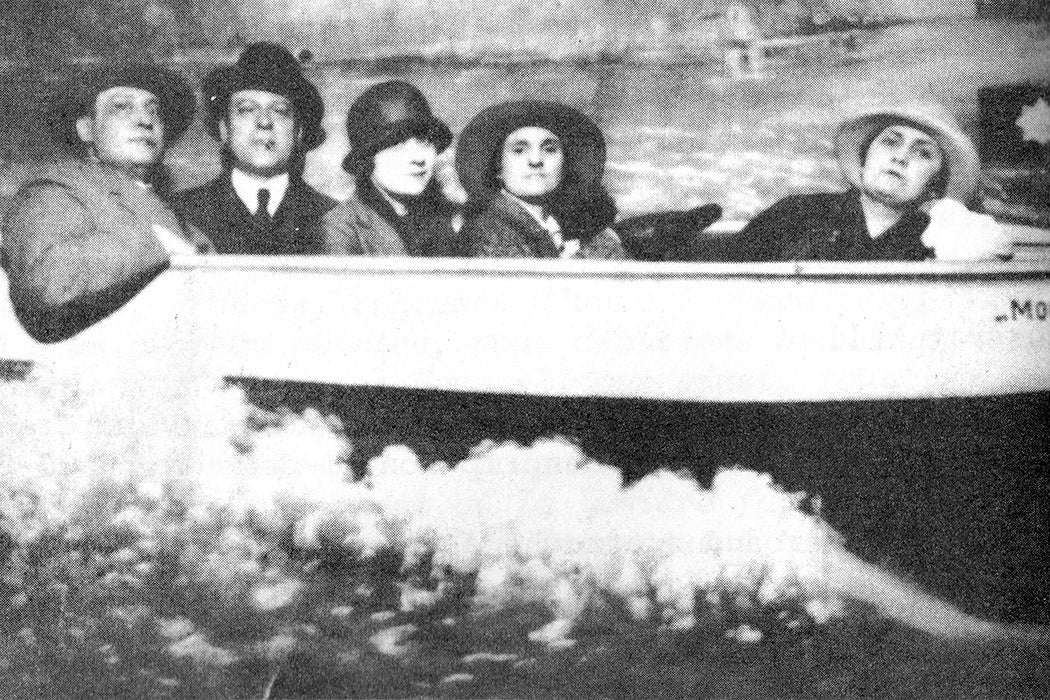Paris in the 1920s was a hub for literary experimentation and entrepreneurship. Live, write, publish, repeat: that was the creed. With luminaries such as F. Scott Fitzgerald, Ernest Hemingway, Gertrude Stein, and Djuna Barnes calling the city home, this state of affairs was impossible to avoid. Leading the charge were two titans of the book printing and distribution industry: Sylvia Beach, owner of the now world-famous Shakespeare and Company bookshop, and Adrienne Monnier, Beach’s lesser-known companion and direct counterpart, who also owned a bookshop with a more standard and perhaps less memorable French-language name, La Maison des Amis des Livres (The House of Friends of Books).
Monnier found herself overshadowed by Beach in every way. Besides operating a more popular and successful bookshop, Beach took on daring projects, becoming the first publisher of Irish expatriate author James Joyce’s highly controversial Ulysses—an enterprise in which Monnier participated but didn’t spearhead—in 1922 and willingly putting herself in the line of fire for obscenity charges and allegations.
It was perhaps Beach’s boldness that inspired Monnier to take a risk of her own and attempt to publish works no one else would. In June 1925, she launched the first issue of Le Navire d’Argent (The Silver Ship) with a clear plan for its voyage. Fresh, fearless modern writing, with the free, adventurous spirit of 1920s Paris (there was a reason that Monnier named her literary review after the symbol on the city’s coat of arms).
Trusting Monnier’s competence and good taste, many writers of distinction submitted their works for consideration. Le Navire d’Argent can claim credit for first publishing the following pieces: a French translation of T. S. Eliot’s “The Love Song of J. Alfred Prufrock”; an early, rough version of Joyce’s Finnegans Wake; and the first French translations of the poetry of Walt Whitman and E. E. Cummings; as well as Ernest Hemingway’s writings.
Monnier was not above showing a bit of favoritism to her close social circle, including poet Paul Claudel. “Claudel and Adrienne Monnier had been friends from at least 1919, as Claudel’s journal testifies,” writes literary scholar Konrad Czynski, who characterizes Monnier as something of a midwife for the birth of several great careers. “Among other generous acts of friendship, she published [Claudel’s] ‘Philosophie du livre’ in the third issue of Le Navire d’ Argent (August 1925).”
Weekly Newsletter
According to Andrea Weiss, author of Paris was a Woman: Portraits of the Left Bank, the magazine also served as a platform for Monnier’s own poetry, which she published under a pseudonym.
The last issue of the magazine came out in May 1926, when Monnier, after a valiant effort, was forced to surrender due to financial difficulties. Though Le Navire d’Argent’s lifespan was short, history has proven time and time again that journals with brief runtimes can still make a major cultural impact. Monnier ultimately succeeded in proving to the world that women have the gumption and intellectual capacity to move forward progress in the arts. Today, her name can be found in many biographies and memoirs of Paris in the Roaring Twenties, remembered with affection as a lioness who roared.







